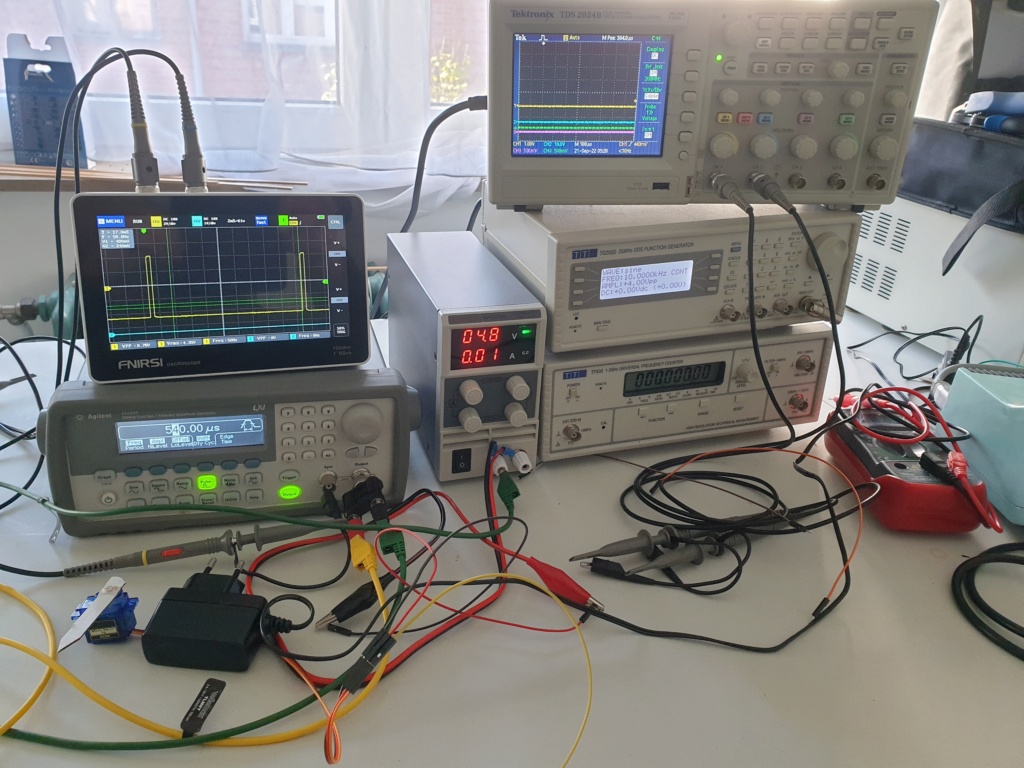I am controlling my turnouts with those cheapie 9 gram servos. When I set the throws with a device I made to show me the servo angle in real time, the servo works well.
When I hook them up to my DCC controller using the same extension that I used to get the servo angle, the servo shutters wildly and it is not at all controllable. If I remove the extension and plug directly into the DCC controller, all is well. The servo extension is one I made using supplies I use to make them for my R/C airplanes. Connectors are gold plated, and wire is 22 gauge high strand count. I also make these for flying buddies and have never had a failure myself or have heard of one from my buddies, so I am fairly confident that the extension is OK . I even tried 2 other ones with the same results. Extensions are 24 inches. I will need a few longer ones for other turnouts.
I also tried some higher quality servos (Hitech HS81, HS65, Futaba 3001, etc) and they all work just fine with the extension in place. Common denominator appears to be these 9Gram servos. I tried a few of them, and they all behave the same.
I already 3D printed all the servo mounts, and at a dollar or so a piece (as opposed to $15 or so) I really would like to use these servos. There are also a few places I can not fit larger servos.
Anyone else experience this, or any suggestions?
Thanks
Dave
When I hook them up to my DCC controller using the same extension that I used to get the servo angle, the servo shutters wildly and it is not at all controllable. If I remove the extension and plug directly into the DCC controller, all is well. The servo extension is one I made using supplies I use to make them for my R/C airplanes. Connectors are gold plated, and wire is 22 gauge high strand count. I also make these for flying buddies and have never had a failure myself or have heard of one from my buddies, so I am fairly confident that the extension is OK . I even tried 2 other ones with the same results. Extensions are 24 inches. I will need a few longer ones for other turnouts.
I also tried some higher quality servos (Hitech HS81, HS65, Futaba 3001, etc) and they all work just fine with the extension in place. Common denominator appears to be these 9Gram servos. I tried a few of them, and they all behave the same.
I already 3D printed all the servo mounts, and at a dollar or so a piece (as opposed to $15 or so) I really would like to use these servos. There are also a few places I can not fit larger servos.
Anyone else experience this, or any suggestions?
Thanks
Dave


